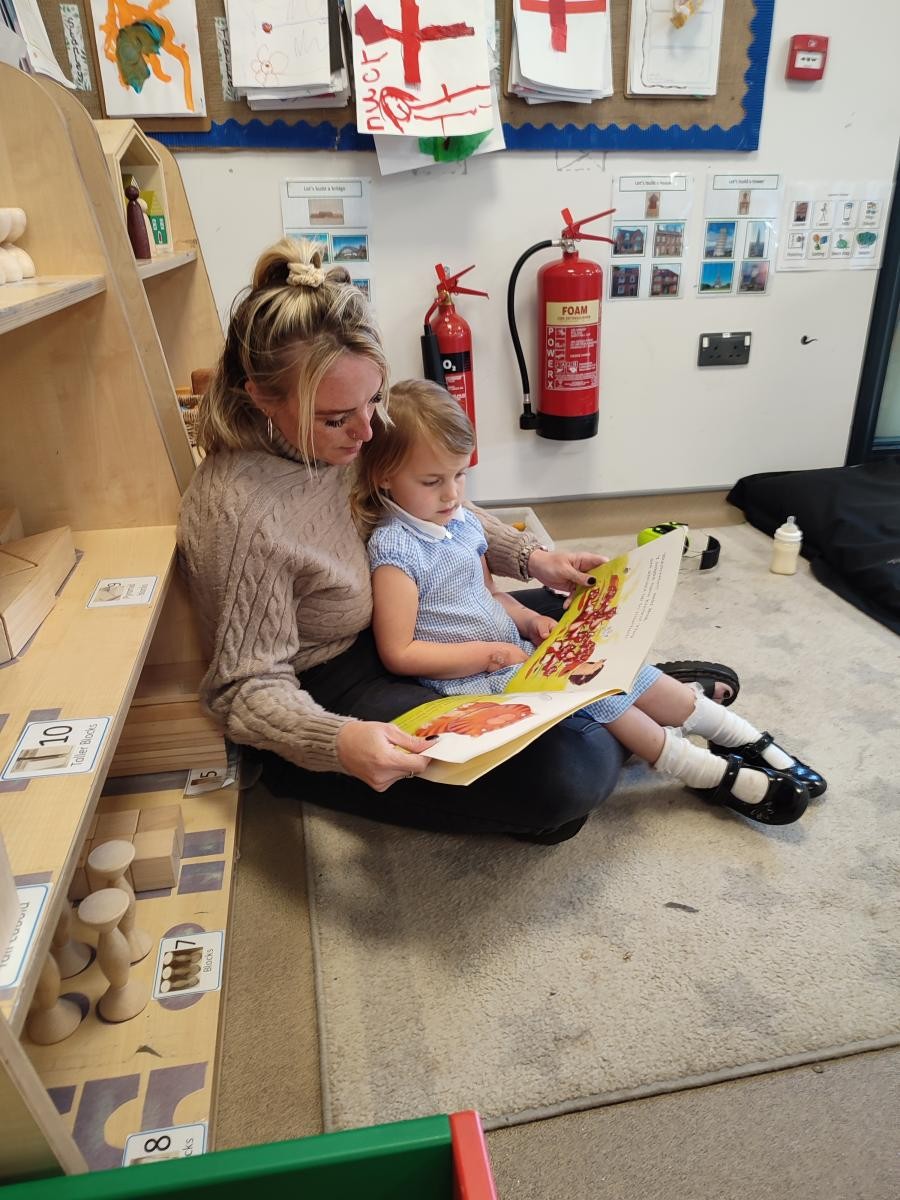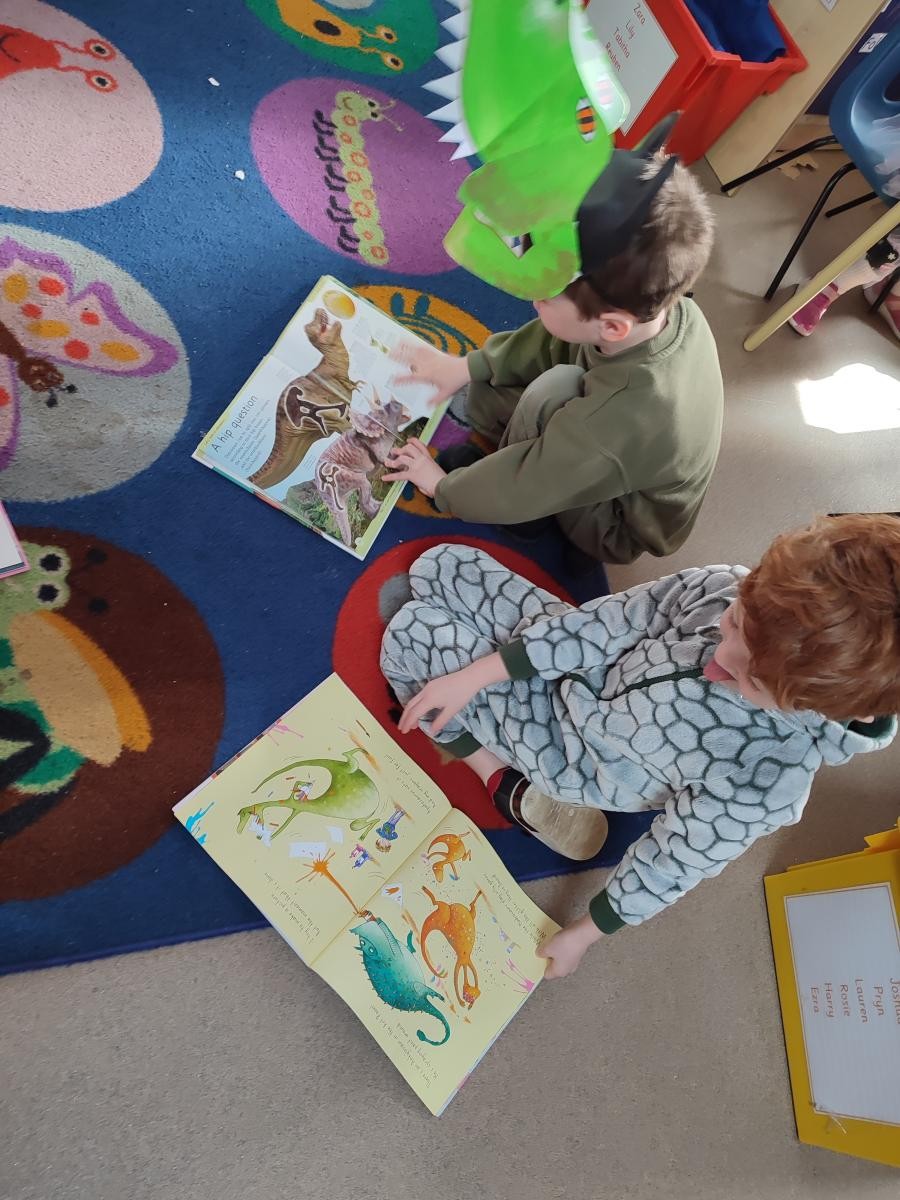- Ensure all children develop confident early reading skills through the provision of high calibre, consistent and regular phonics sessions
- Personalise phonics learning to the specific needs of individual children as necessary to ensure progress
- Ensure the teaching and learning of phonics is progressive and systematic throughout EYFS and Key Stage 1
- Develop phonic skills as children progress onto further areas of reading application and spelling as stated in the National Curriculum for Key Stage 1 and 2
- For children to enjoy their learning whilst securing the skills needed to develop their fluency in reading and move to gaining a fuller comprehension of text
How our children learn phonics
At Shortlanesend School we use a synthetic phonics programme to teach reading called 'Read Write Inc' produced by Ruth Miskin. As children progress and can decode fluently they move onto the Literacy and Language scheme which develops children’s comprehension, vocabulary, writing, critical thinking and discussion skills and grammar – in a fun and meaningful way.
Read Write Inc Phonics is a method of teaching reading which is centred around learning the sounds of the letters (phonics), and then blending them together to read words. The children also learn to break down words into individual sounds in order to write them.
How it works
The children are assessed and grouped according to their ability.
They work in small groups with a teacher and a teaching assistant.
At the end of each half term the children will be assessed again to check they have made progress and will be grouped again. In addition to the Read Write Inc programme the children will also be working on writing skills and storytelling in their classes with their own class teacher.
Reading
Using Read Write Inc the children learn to read effortlessly so that they can put all their energy into understanding what they read.
When using 'Read Write Inc' to read the children will:
Learn 44 sounds and the corresponding letter/letter groups using simple picture prompts
Learn to read words by blending the sounds together
Read lively stories featuring words they have learnt to sound out
Show that they understand the stories by answering 'Find It' and 'Prove it' discussion questions.
Writing
Read Write Inc allows the children to spell effortlessly so that they can put their energy into working out what they want to write.
When using 'Read Write Inc' to write the children will:
Learn to write the letters/letter groups which represent the 44 sounds (graphemes)
Learn to write words by sounding them out and then writing the corresponding graphemes
Learn to write simple and then increasingly complex sentences
Compose a range of texts using discussion prompts
Compose stories based on picture strips.
Talking
When using 'Read Write Inc' the children work in pairs to:
Answer questions to practise every activity
Take turns talking to each other
Give positive praise to each other.
Blending
Children learn to read words by blending the letter-sounds that are in the Speed Sound sets
(shown further down the page).
Help your child learn to read words by sound-blending e.g. c-a-t = cat
Help children to say the pure sounds, as quickly as they can, and then to blend the sounds together to say the whole word.
Set 1 sounds
Set 2 sounds
Set 3 sounds
How will I know how to pronounce the phonic sounds?
Visit the parents page at:
Parent guide to Read Write Inc. Phonics | Oxford Owl
What else can I do to help my child read?
Read a variety of books (fiction, non-fiction, rhymes etc).
Discuss the different features of various books.
Talk about the books and other reading materials that you have shared.
Explain the meaning of new words.
Most importantly though, show the fun that can be gained by listening to stories and reading a range of texts.e.g. reading and then following a recipe together
Don't forget you don't have to read just books, cereal packets, shopping lists, road signs, web pages, magazines, newspapers etc are useful ways to practise reading.
Phonics Screening Check
Read, Write, Inc
Reading
At Shortlanesend School we believe that reading is a key tool for life. We are passionate about teaching our children to become natural, enthusiastic and fluent readers. All children have access to a wide range of inspiring and high-quality texts to develop learning in all curriculum areas. A reading rich environment is at our very core, an environment in which books are valued and promoted throughout the school. Which along with daily, weekly, termly and special activities ensure that children not only enjoy learning to read but are encouraged to flourish - mirroring our ethos of:
Smile - Learn - Excel
Children are heard to read individually and in groups regularly. All children experience a wide range of books through story times and VIPERS reading sessions. Our children enjoy using Accelerated Reader to match their reading fluency with their comprehension. We encourage our children to read both in school and at home. Please see the list of prompts to support reading at home below and the year group posters of recommended reads.















